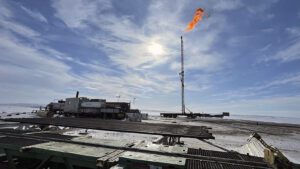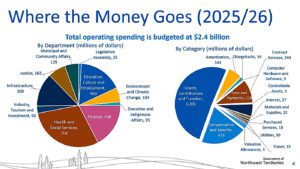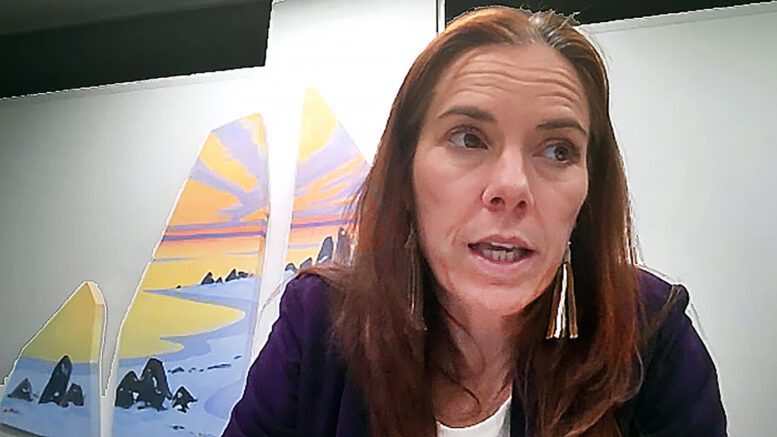The pending closure of the NWT’s three huge diamond mines will certainly reduce direct taxation revenues for the territorial government, but it’s the ripple effects through the private sector that could really hurt our economy, says the minister in charge.
During a virtual town hall Thursday night — the first in a series of public meetings called Budget Dialogues 2025 — Finance Minister Caroline Wawzonek explained how some roughly two-and-a-half billion dollars in operating expenditures will be spent on programs, services and how the capital budget for bridges and roads is developed.
“Next question, what is the GNWT doing to look for other sources of revenues with the planned closures of the diamond mines? So the diamond mines don’t provide a huge sliver on the pie chart about where our revenues come from … the private sector industry does provide direct revenues in the forms of corporate taxes, and from the mines’ perspective, they all also provide property taxes and royalties,
“Then the folks that are employed there are paying more personal taxes than what they might from other sectors or industries where wages are lower. On the overall scale of the revenues that we get, they, you know, 81%, if I’m not mistaken, of our revenues come from some form of government transfer from the federal government.
“The reason that we would be worried about mine closures … is that the development corporations for Indigenous governments are in some cases, 50% to 90% dependent upon revenues that they received through various contracts with the diamond mines. One member of family may be employed, but that can provide stability to a fairly large extended family.”
Wawzonek said her government is taking action, by encouraging more investment in the mineral resource sector or in the natural resource sector, in general.
She mentioned the LNG Energy Security Project, led by the Inuvialuit Regional Corporation, that is bringing “a tremendous amount of interest” over what that might do for the Beaufort Delta’s future overall.

A well production test in 2024 at the Inuvialuit Energy Security project, off the Inuvik to Tuktoyaktuk Highway. It’s a one-of-a-kind energy project, where Indigenous people own the resource, the land and the facilities. (Photo courtesy of IRC)
“Last year, we saw a high amount of exploration dollars, this year with the level of uncertainty in the world (with the tariffs), exploration might be lessened), but I believe that there’s tremendous mineral resource opportunity here that we now need to find a way to translate into investment to operating mines.”
So what role can the GNWT play to make the North more palatable for private investment? Wawzonek said a stable, predictable regulatory regime and less red tape. But the big ticket items — transportation corridors, energy corridors, telecommunications corridors — are consistently named as being barriers to investment and expansion for business.
There is an added wrinkle to this year’s number crunching, as this spring, the GNWT received approval from the Ottawa to increase its federally imposed borrowing limit from $1.8 billion to $3.1 billion.
So, should the GNWT rack up some charges on that huge line of credit to ensure a better quality of life for its citizens? Should it use a chunk of the credit to leverage more federal cash for a major infrastructure project, such as the Mackenzie Valley Highway? Or should it just keep it for a rainy day — or in the Northern drought zone, for summer wildfires and low water levels.
“But last word on the debt,” said Wawzonek. “We also don’t want to be in a situation where we are not using the resources we have, including the ability to take on debt in order to provide infrastructure. In particular, building significant pieces of infrastructure in the North is going to be costly, and it is probably going to require some debt, and we just want to make sure that we’re doing that in a way that it maintains a responsible approach to managing public dollars.”
Minister Wawzonek will host Town Hall sessions with the public in-person in Yellowknife and Inuvik in June 2025. More budget information can be found here. A report summarizing key findings and recommendations will be released to the public in Fall 2025.

(Image courtesy of GNWT)





